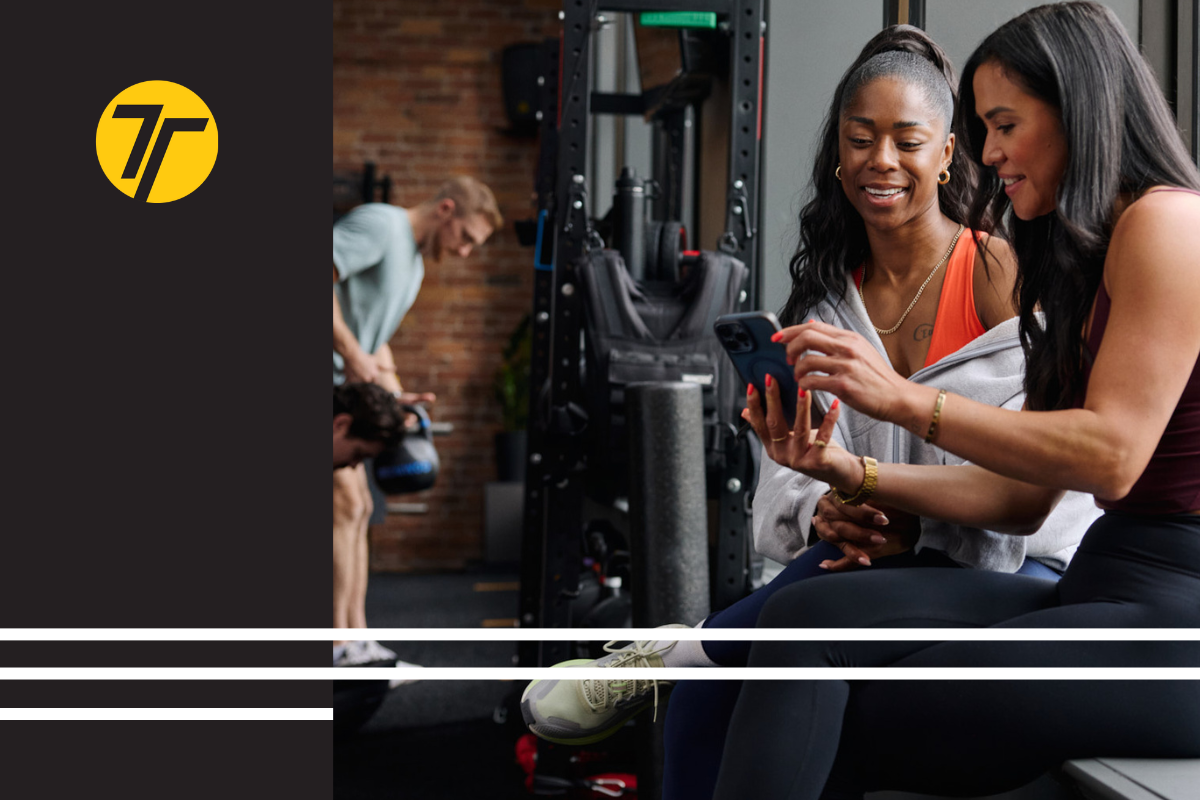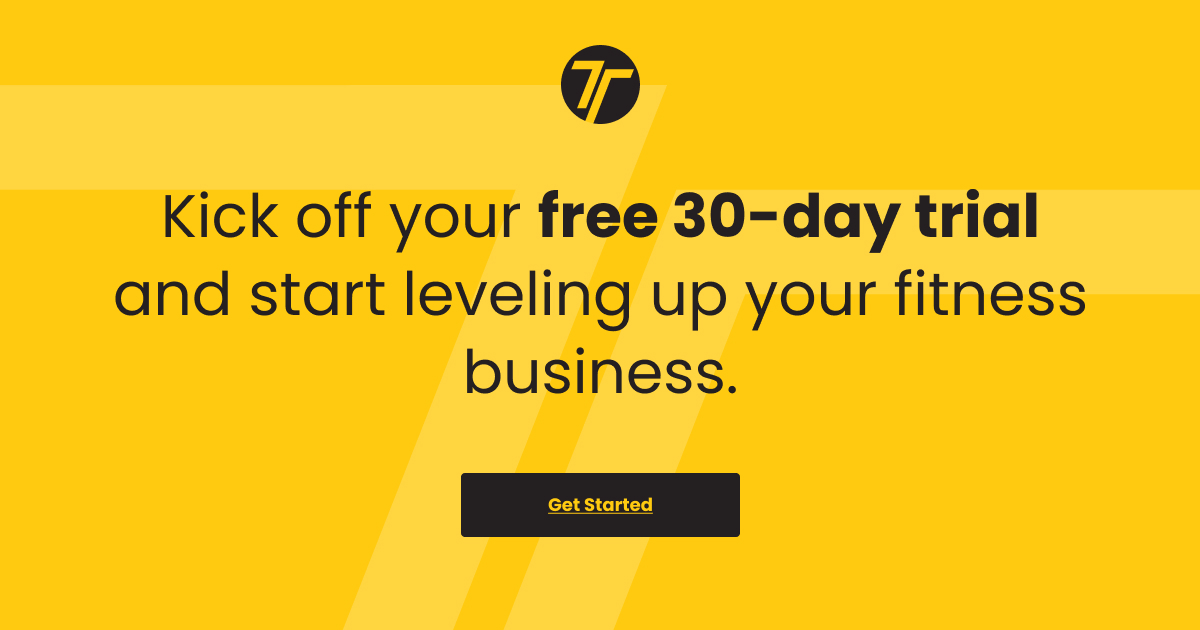
Think of your marketing like a storefront window. Even before the internet, businesses used signage, displays, and price tags to “silently” sell to anyone walking by. That visibility wasn’t optional; it was how business worked. It still is.
So instead of waiting to feel ready or post the perfect reel, focus on showing up consistently in the background. The people who are supposed to notice will. And that’s when content starts turning into clients.
Here are 15 practical ways to promote your personal training business, online and in-person, that actually work in today’s fitness landscape.
15 Powerful Promotional Ideas for Personal Trainers
#1: Create a Professional Website
You don’t need a full website to start, but you do need something that’s yours. A domain. A space you control.
It could be a landing page, a portfolio, or a simple site with your offer, prices, and CTA. Doesn’t matter. What matters is that it’s not rented space like social media. You own it. You control how it looks, what it says, and what it drives people to do.
Think of it like a physical shop. You wouldn’t just hang posters around town, you’d want a place people can walk into. A website is that storefront online.
Bonus if you include a blog or FAQ page to rank in Google. But even a clean landing page is enough to get started.
📝 Check Out: How to Build a Website for Your Personal Training Business
#2: Learn to Navigate Social Media Like a Marketplace
With up to 82% of consumers relying on these platforms to discover or research products, and social-commerce projected to make up 17%+ of online sales in 2025, it’s clear social networks have shifted into full-fledged marketplaces.
And just like any market, you need to know how to stand out, communicate, and sell without being annoying.
So don’t treat social like a personal journal. Use it to:
- Show what you sell
- Share your results
- Build a relationship with your people
- Get them to take the next step
#3: Use Local Directories and Online Platforms
You have to claim your space on Google and anywhere else people search. That includes Yelp, Bing, Apple Maps, fitness directories, and even the data ChatGPT pulls from.
These platforms still drive discovery. And most trainers ignore them because they seem boring or “admin-related.”
But this is real digital marketing. It’s the stuff that works in the background 24/7.
What to include:
- Business name, services, hours, location
- Photos, reviews, contact info
- Links to your website, socials, or app
If you don’t know how to do this, pay someone who does. This is foundational. You don’t want to build everything else on top of missing basics.
#4: Host Free Events, Workshops, or Pop-Up Classes
Workshops and pop-ups are trending hard in fitness right now, and for good reason. They get attention. They draw crowds. And they’re a smart way to build awareness without needing a big budget.
Of course, not every person who shows up will become a client. That’s not the point. You’re giving people a low-risk way to experience what it’s like to train with you. And sometimes, they bring a friend who turns out to be your best long-term client. Or they will refer you later. Either way, it works.
Keep it short and specific:
- 30–45 min
- One clear topic
- Simple takeaway or next step
You can host it in a gym, a coworking space, a studio, outdoors, or online. What matters is that you show up locally and give people something real.
#5: Build Referral Loops with Other Professionals
Doctors, physios, RDs, therapists, and other personal trainers with whom you might share the audience, or not, all work with people who need movement. So instead of competing with them, collaborate. Build referral loops where:
- You send your clients to them when needed
- They send their clients to you for movement, strength, or accountability
This is how you build trust and visibility, without needing content or ads. You’re not just another trainer. You’re part of a client’s full support system.
Bonus: This also works with local barbers, salons, massage therapists, and even baristas.
#6: Collect and Showcase Real Client Wins
The best promo isn’t what you say, it’s what others say about you. Get in the habit of asking for testimonials and screenshots from your clients. Progress pictures, habit streaks, a message saying “I finally feel good again” – it all counts.
Don’t wait for someone to write a perfect review. Ask for the real stuff. Then use it in you:
- Website
- Instagram Stories
- Emails
- Online programs
Every time you show proof, you lower the risk for the next person who’s thinking about working with you.
#7: Leverage Local PR That Actually Matters
In 2025, PR doesn’t come from traditional media; it comes from social media, partnerships, podcasts, and word-of-mouth from people with influence in your community.
Reach out to local businesses, wellness cafes, or coworking spaces and suggest a cross-promo: a free class, a mini challenge, or a discount for their staff. Offer a free session to local influencers, content creators, or podcast hosts who align with your values. Let them experience your coaching, document it, and share it with their audience.
Don’t forget big businesses, too! They might be open to offering a workshop, fitness retreat, or event to their employers.
This kind of visibility builds real awareness, not just online, but on the ground. One good post from a trusted voice can open the door to new leads, partnerships, and long-term client relationships.
#8: Show Up Where Fitness Culture Is Happening
Fitness expos and wellness markets still matter, but the community has expanded.
Think local run clubs, outdoor yoga meetups, pop-up recovery lounges, and health-focused co-hosted events. These are active, engaged audiences, and most of them are already interested in improving their health.
You don’t need a booth to make an impression. Show up, meet people, start conversations, and follow up later. Or go one step further and offer a free warm-up or cool-down at one of these events with a custom QR code that links to your consult page or lead magnet.
Get in front of people who care about their health, even if they’re not ready to train yet. That’s how you stay top of mind.
#9: Create a Free Offer That Filters for Serious Leads
A free consultation is still one of the best ways to turn interest into paying clients, if it’s designed well. Don’t frame it as “let’s chat.” Build it as a real value-driven offer:
- A 20-minute strategy call
- A mini movement assessment
- A nutrition audit
- A habit planning session
Keep it tight. Give them a win or insight they can apply instantly. And set it up with a short form that qualifies them before they book. This filters for people who are genuinely interested in coaching, not just free stuff.
📝 Check Out: Conversion Techniques That Work: How to Transform Cold Leads into Loyal Clients
#10: Create Tiered Packages to Sell More (Without Hustling More)
Training is a service, but when you package it like a product, it becomes easier to sell, price, and scale. This is called turning your business into a productized service: structured, repeatable, and easier for clients to say yes to.
Build packages around clear outcomes. Instead of selling sessions, you’re selling a result with a start, middle, and end. Think:
- A 4-week kickstart program
- A 3-month strength or fat loss plan
- A full wellness package with nutrition, check-ins, and habit coaching
Then tier it:
- Basic: workouts only
- Standard: workouts + accountability check-ins (chat or in-app messages)
- Premium: full coaching experience (tracking, nutrition support, custom adjustments)
Add-ons let you upsell without pressure. A simple, “Want weekly check-ins too?” can lift your average sale. As for discounts, use them strategically in terms of price anchoring, not undercutting.
Show the full value of your service, then offer a “founding client” price or limited-time rate (e.g. $375) that makes it feel like a win. You’re guiding the sale, not racing to the bottom.
📝 Read More: Top 5 Personal Trainer Upselling Techniques That Actually Work
#11: Host Educational Workshops
Workshops can help you solve real problems your clients deal with daily in a structured and focused format.
The best topics come straight from your clients and audience. What do they keep struggling with? Where do they feel confused or overwhelmed? What would the population at large really get value from?
Run workshops on things like:
- Nutrition in a junk-food world (how to read labels, pick better defaults)
- How to spot and stop emotional eating (what triggers it, what to do instead)
- Training at home without a gym (bodyweight options, building routines that stick)
- Mobility for desk workers or Fat loss myths that hold people back
- Stress management techniques in a healthy lifestyle (how exercise and whole foods help with that)
Whatever your specialty is, use it, but make sure it lands with them. This isn’t a lecture. It’s something they’ll remember, use, and maybe even share.
#12: Partner with Influencers (The Right Way)
Start with micro-influencers or local creators who speak to the kind of people you already help. Think lifestyle bloggers, wellness creators, local runners, or group fitness lovers—not just “fitspo” accounts.
Instead of chasing a collab, give them something real:
- A free session or workshop
- A challenge invite with a bonus reward
- A branded experience they can share naturally
Make it easy for them to post. Don’t over-script it. The more genuine the partnership, the more people will pay attention. Most people don’t actively follow influencer promotions, but they do trust what they see from people they already follow.
Whether it’s a post, a story shoutout, or a podcast guest spot, the goal is the same: tap into an existing audience that’s already warmed up. You borrow that trust and turn it into leads.
#13: Use Email Marketing to Nurture and Convert Leads
92% of internet users report having an email account, and 61% use email on a typical day.
Most people won’t sign up the first time they see your content. That’s where email marketing comes in. With a 4200% ROI, it’s still one of the most effective channels, especially when someone has given you their consent to contact them.
It means you’ve got a free invitation into their private space. So you better show up—with:
- Weekly tips
- Client stories
- Quick advice
- One clear offer
Use a freebie to get people on your list, a lead magnet, a quiz, or a challenge invite. Then let email do the work of nurturing and converting quietly in the background.
#14: Launch a Referral or Loyalty System
Referrals are still one of the highest-converting growth tools a business like yours has.
That’s because they’re easier to convert and tend to spend more over their lifetime. And you don’t have to cast a wide net to get them, just start with the people you’re already talking to (without becoming too self-involved or pushy).
That still needs a bit of preparation and setting up a simple referral or loyalty system that rewards them for sharing your service. It can look like:
- 15% off their next package when a friend signs up
- One free session for each successful referral
- Stackable credits or points that they can redeem later
- Value-add perks like a nutrition consult, branded gear, or a recovery drink
📝 Read More: The Power of Client Referrals and How to Get Them
#15: Build a Real Personal Brand
Don’t waste your time or money obsessing over visual identity. Branding isn’t your logo or your Canva color palette; that’s surface-level. What actually moves the needle are the brand foundations most trainers skip:
- Positioning
- ICP (Ideal Client Profile)
- Messaging
- StoryBrand
These might be heavy marketing words, but they’re also how people understand you. Why do you train the people you train? What brought you here? What makes your space and coaching style different? These are the frames of your brand.
When those parts are clear, every piece of content becomes easier to make and more effective. You start saying the right things to the right people. You start sounding like someone worth following.
How it shows up in practice:
- Weekly thoughts on your niche (fat loss, strength, mindset)
- Client wins with story + strategy, not just before/afters
- Sharp opinions on industry trends and BS people are tired of
- Visuals, phrases, or formats that instantly say “you”
Pick one channel, YouTube, a blog, or Instagram, and start showing up there with consistency. Doesn’t matter where. It matters that it’s yours.
Over time, this becomes your flywheel: content builds trust → trust leads to clients → clients fuel more content.
Final Thoughts: Pick a Few and Go Deep
You just saw 15 ways to promote your personal training business. You don’t need all of them. But a few of them, done well, that’s enough to change everything.
You’re actually not supposed to do all 15. That’s bad advice. Start by picking 1, 2, maybe 3 that feel natural to you, ideas that align with what’s already worked for your ideal clients and how you like to operate. Something you’ll stick to and won’t drain you or make you hate marketing altogether.
From there, keep learning. Marketing, PR, content, email, social, it’s all part of the job now. Doesn’t matter if you’re working in a gym or building a global coaching brand. If you want to grow, you have to know how to be seen.
That’s where ABC Trainerize helps. You get the systems, automations, and digital infrastructure to run this in the background:
- Online training, client tracking, and habit coaching
- Referrals and in-app messaging
- Branded apps, automations, and client engagement tools
So you can spend less time on admin, and more time promoting your way, whether that’s in your community, on content, or with the clients right in front of you.
Start your free 30-day trial of ABC Trainerize and build a business people can find, trust, and buy from!

